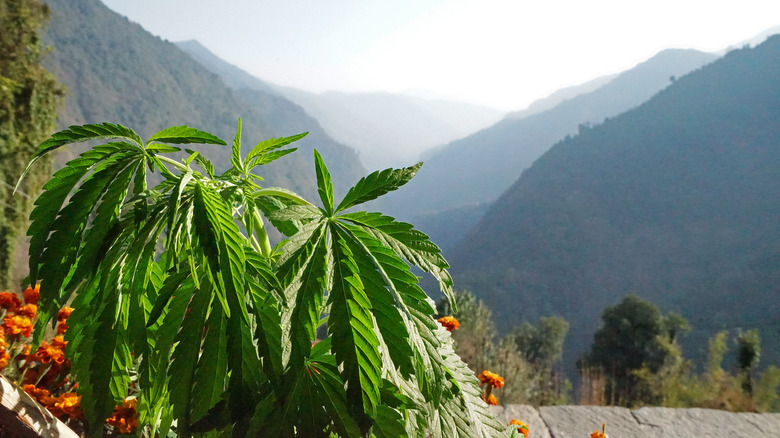This Is Where Early Humans First Domesticated Cannabis
Pre-historic people likely knew a lot about plants and the natural world that surrounded them. They had to in order to survive. So when hunter-gatherer societies started domesticating plants about 12,000 years ago, they grew what would be useful to them. They would need food, obviously, but also fiber for making things. Maybe plants with medicinal properties would be a good call, and maybe even plants with psychotropic attributes would be domesticated.
While it's not known for sure all of the ways our ancient ancestors used the cannabis sativa they cultivated, what is known is where it was first domesticated. A group of scientists used whole-genome re-sequencing of 110 unique strains of marijuana from around the world to narrow down that the plant was first domesticated in East Asia, or more specifically, what we call China today, according to a peer-reviewed article published on Science Advances in July 2021.
Much like the genealogy of modern humans can be traced back to Africa, according to Your Genome, the genealogy of today's cannabis can be sourced back to China. According to the journal, Nature, that finding is relatively new. Prior to this latest research, it was widely accepted that the origin of Cannabis cultivation was in Central Asia.
The many useful properties of cannabis sativa would have come in handy
It's no wonder cannabis made the cut for cultivation early on. Take away the "Reefer Madness" stigma that proliferated the twentieth century and look at the plant at face value. According to a scholarly article called "Cannabis sativa: The Plant of the Thousand and One Molecules," the oft misunderstood plant is "a treasure trove of phytochemicals and a rich source of both cellulosic and woody fibers."
The stalk of a cannabis plant is cultivated for strong, pliable fibers which can be used to make things like fabric, rope, and animal bedding, and is even being looked at to replace plastics in the auto industry, according to the article. The seeds can be used for oil and can be consumed for nutritional purposes. Tea can be made from the leaves.
The plant is drought- and pest-resistant and easy to grow, hence the nickname, "weed." Today Cannabis is being recognized for its medicinal properties, but likely early humans already knew that as they relied on natural sources for all medicinal purposes.
It isn't really known when humans started smoking cannabis, but a 2019 study published by Science Advances found that circa 500 B.C. cannabis plants were burned in wooden braziers used in death ceremonies, which "suggests cannabis was smoked as part of ritual and/or religious activities in western China by at least 2,500 years ago and that the cannabis plants produced high levels of psychoactive compounds."

